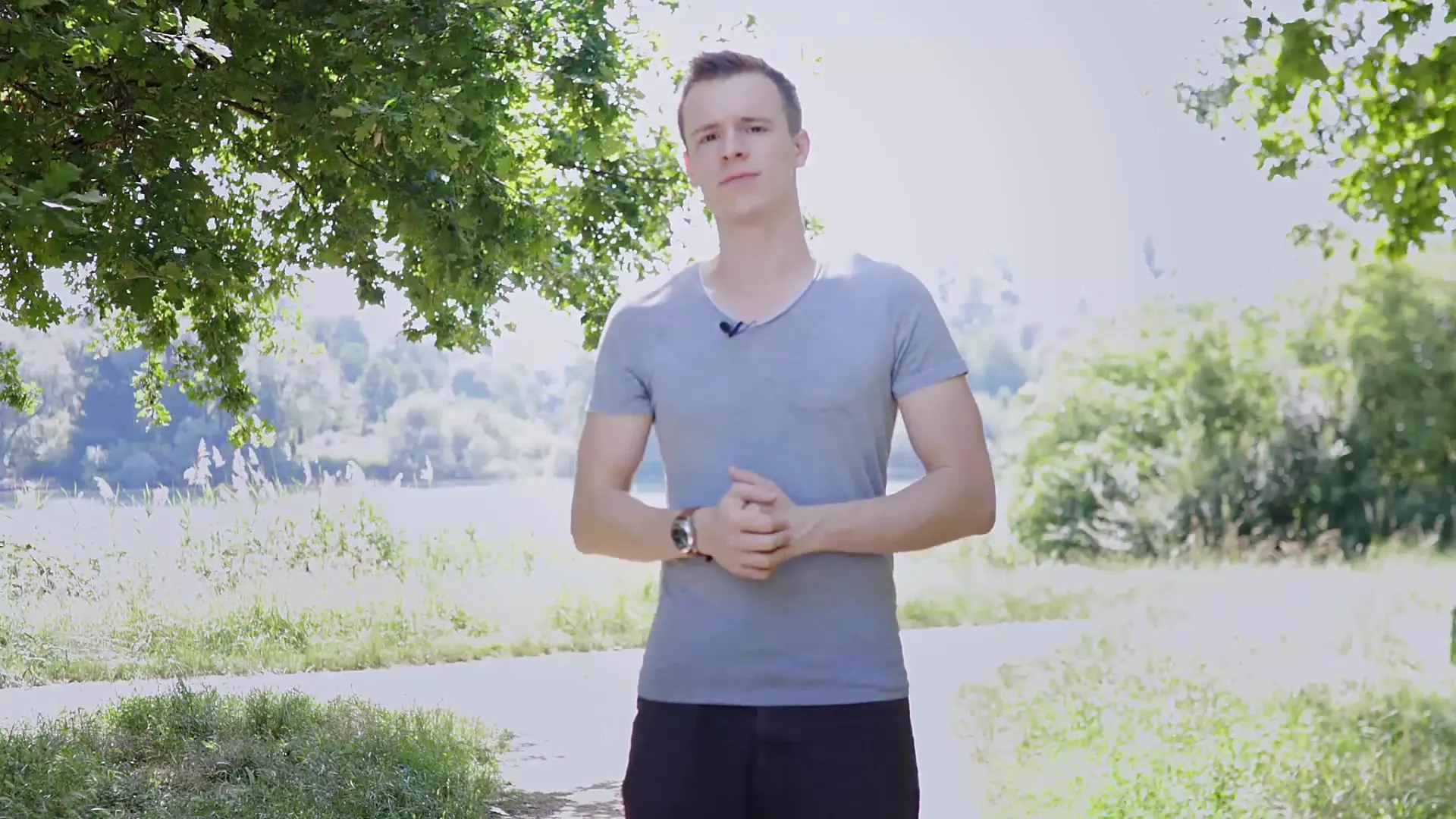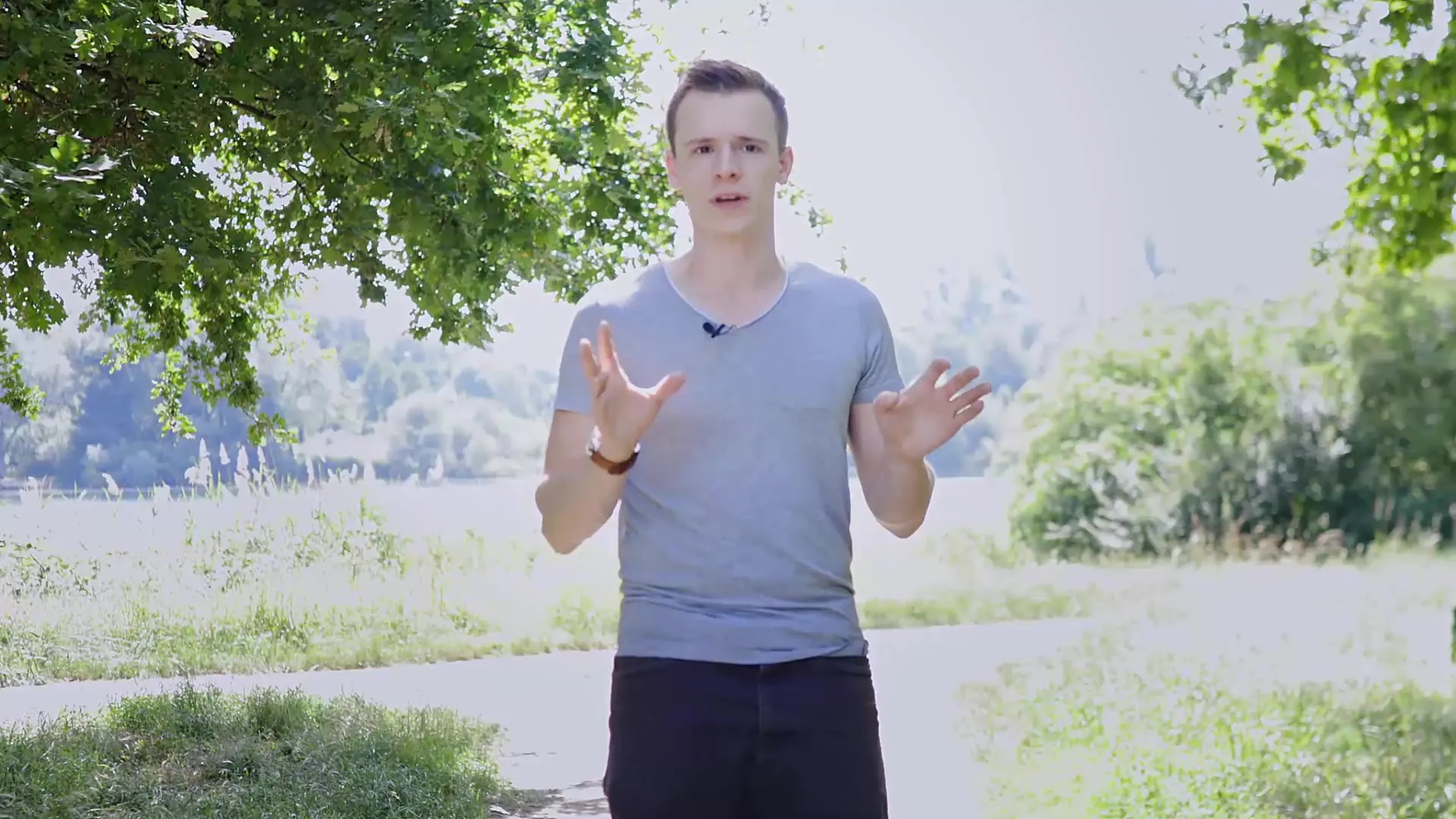Every good video starts with the right composition. There are numerous techniques to guide the viewer purposefully from one subject to another. While photography has its own rules, filming presents additional challenges, especially due to movement. In this guide, you will learn how to effectively implement leading the eye in your videos to spark your viewers' interest and focus on what matters most.
Key Insights
- Sharpness directs the viewer's gaze to the main subject.
- Light can be used to purposefully guide attention.
- Colors attract the eye but can also distract if not used strategically.
- Make sure the background does not distract from your main subject to optimize attention.
- In editing and cutting, it's important to maintain continuity and movement of the eye guidance.
Step-by-Step Guide
1. Use Sharpness Purposefully
Start by focusing your video on the main subject. Use sharpness to direct your viewers' attention. In your video, you can make the background blurry so that the focus is clearly on you. This way, the viewer's gaze is inevitably drawn to your main subject, as blurry areas generally receive less attention.

2. Use Light for Eye Guidance
The arrangement of light sources in your set plays a crucial role in eye guidance. Bright areas draw the eye, while dark areas often receive less attention. For example, if you use a well-lit background, the main subject is also brought into focus. You can achieve this by making the background light or by deliberately darkening the edges of your video, so the attention is even more directed to your subject.
3. Use Color Selection Consciously
Color has a tremendous attraction and can be both helpful and distracting. Consider which colors appear in your image and how they relate to each other. A notable element that stands out due to a vibrant color – like a red camera strap – can draw attention to your subject. However, make sure that these colors do not distract from the main subject, especially if they are too dominant.
4. Design Background for Optimal Attention
The design of your background is essential for effective eye guidance. A calm, blurry, and less colorful background ensures that the viewer is not distracted from your subject. You should ensure that the background does not have bright or interesting elements that could distract the viewer. This way, the focus remains clearly on your main subject.

5. Maintain Continuity in Editing
When working with cuts, always make sure that the viewer can follow the movement. If your main subject moves in one direction, it should appear in a similar position in the next scene. A sudden change in position can confuse the viewer and disrupt eye guidance. Therefore, focus on continuity in your editing and plan your scenes so that they fit together dramaturgically.
Summary – Eye Guidance in Videography: Tips for Better Video Quality
By applying these tips for eye guidance in your videos, you can purposefully steer the perspective of your viewers and significantly enhance the quality of your content. Ensure that your sharpness, light, color selection, and background design work harmoniously together. Ultimately, with well-thought-out eye guidance, you will be able to effectively direct your viewers' attention to what matters and optimize the impact of your videos.
Frequently Asked Questions
What is eye guidance in videography?Eye guidance describes the technique of purposefully directing the viewer through sharpness, light, and color.
How can I optimally use sharpness in my videos?By deliberately using blur in the background, you can draw attention to the main subject.
What role does light play in eye guidance?Bright light can ensure that the main subject is brought more into focus, while dark areas receive less attention.
How important is color selection for eye guidance?Vibrant colors can attract attention but can also distract if not used strategically.
How do I ensure continuity in editing?Make sure that the position and movement of your subject remain clear and understandable during cuts.


